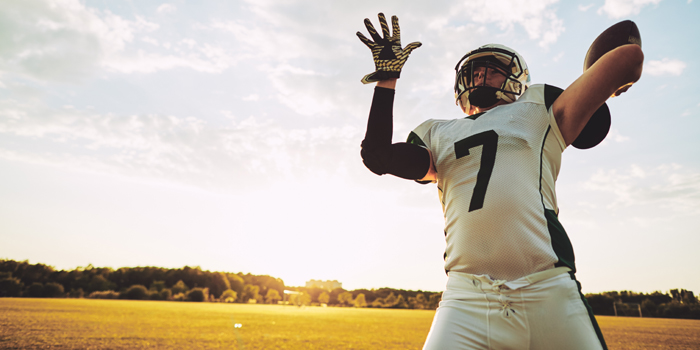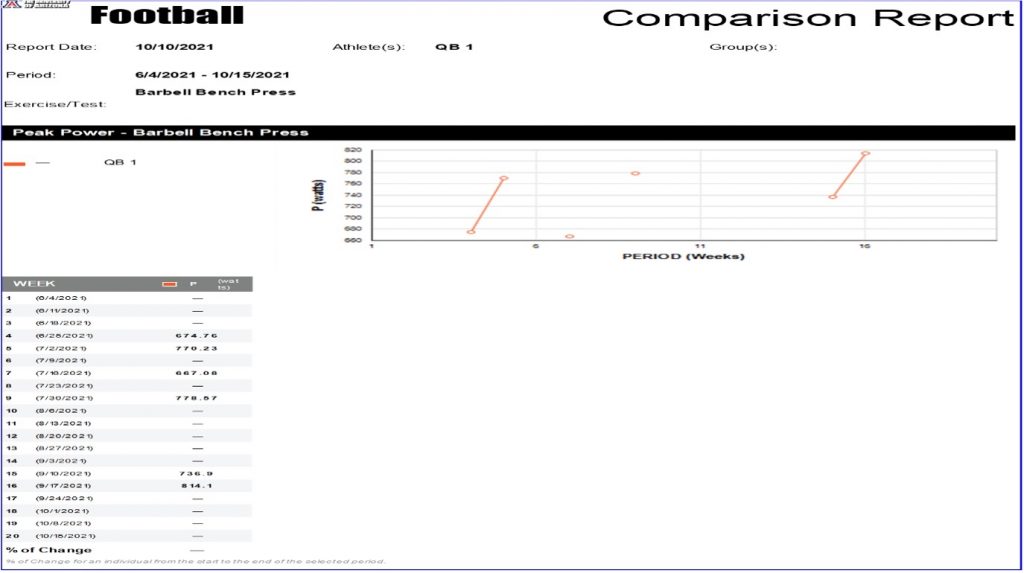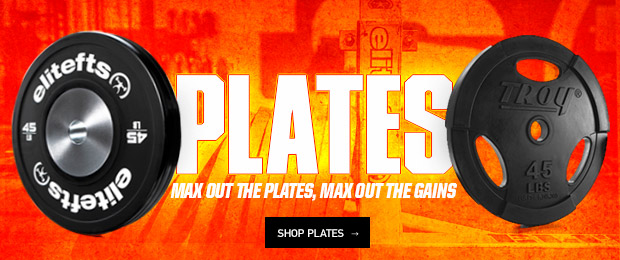
I used to joke with the quarterbacks at Arizona that I was the Kliff Kingsbury of strength and conditioning. For those of you who don't know who that is, he is the head coach of the Arizona Cardinals. Kliff used to be the head coach at Texas Tech back when they had Patrick Mahomes, and he grew a name for himself as a quarterback whisperer. Now he's out there whispering to Murray and doing a phenomenal job at it. In response, my guys would say something along the lines of "Yeah, if he was a baseball guy," and I would say, "I'm not a baseball guy; I just train overhead athletes."
RECENT: Honoring Those Who Came Before Us
In this article, I'm about to share something that I probably shouldn't, but I'm going to anyway. Not too often are there original ideas anymore in strength and conditioning—it's just rehashed ways of doing something different. I will take you through a journey of how I found a truly unique idea and what I was going to do with this idea. Since I am no longer able to run this program (as I don't work with quarterbacks anymore), I hope that you can take the pieces I had and do something truly innovative with this program.
So now we start our tale in a little town called Phoenix, Arizona.
Baseball Pitchers
I remember we had a Monday off during the season (a very rare occurrence) so I used that time to shoot up to Drive Line in Phoenix and pick the brains of the people there. I talked to Coach Rooney for a few hours, went to lunch, watched some pros do their thing, and just enjoyed being back around the game of baseball. In my conversations with Coach Rooney, he told me about a man that did pull-downs with football players, pro guys. And from there, I said, "Well, I have to talk to this man." This man's name is Tom Gormely.
It took me a few days to free up my schedule, but when I finally had the chance, I called Coach G. We talked for about two hours or so. If there were a photograph of me during the conversation, it would look like a mad scientist with stick-it-notes and scribblings everywhere. Cal Dietz and I are alumni from the same school, and it felt like I was talking to the baseball version of Cal Dietz. We went down many rabbit holes, and there were times I felt about two inches tall but continued to listen and ask questions in depth. Coach G was very gracious in answering all my questions and pointing me in a great direction. He connected a lot of things between quarterbacks and baseball for me and let me in on his throwing progressions for the sport of football.
You see, the pitching coach handles all of the throwing progressions in baseball. You cannot go 0-100 in baseball. Otherwise, you'll have a dead arm that will more than likely get blown out at some point in time. Baseball pitchers also do not just throw to throw all of the time. There are times they are working the pitch and times when they are working the arm, and there is a difference between the two.
Football Quarterbacks
In football, the details of throwing are not as stringent. The quarterback coach teaches the players the playbook and the OC calls the plays. There isn't anyone who is working the arm and the throw simultaneously like in baseball. On top of this, there is the heinous act of throwing to warm up that occurs in football.
The proper route would be warming up to throw as well as implementing a post-throw routine to prep the arm for the next day of throwing.
I had to learn this as my time went on with football. I knew we needed a pre-throw routine off the bat which we implemented during spring ball based on a mix-match of pre-throwing routines I had tried and liked. Our post-throw was set to be implemented during player-led practices in the spring of 2022, but I had done some post-throw routines with our starting quarterbacks towards the end of the year. The thing I was really excited about, and I'd like to believe the players were too, was going to be my version of the throwing program.
The Lost Manual for Throwing
The throwing program was going to be (in my mind) a huge tool for us. Not only for building the arms of our quarterbacks but in the recruiting process as well. I mean literally, no one in college football has a throwing program (a true throwing program) for their quarterbacks. Why? I have some opinions, but I just don't think the connection has ever been made at the collegiate level. A throwing athlete is a throwing athlete and when a quarterback goes to throw, imagine a whirlwind spiraling through the foot, hips, spine, and shoulder as power is being produced to throw a ball. That has to be trained and strengthened. The arm is just another part of the body that can be trained like the legs or the biceps if you know how to do it correctly and understand the biomechanics of throwing to which I am still by no means an expert.
So what did this throwing program look like? After talking to Coach G, I immediately got into contact with our pitching coach at the U of A and we sat down and conversed in the clubhouse about all things throwing progression/programming. We talked about plyoball program layout, how he lays out his throwing progressions, the dangers of not throwing enough or throwing too much, distances, intensities, and all the things that you can think of. By the end of that conversation, my mind was numb. But I took away one key component that was going to be the design of the entire program: There are days we are throwing and days we are working the throw.
There are days we are throwing and days we are working the throw.
What that means is that three days a week, we'd work on the throws that a quarterback needs to make during a game with proper footwork, timing, and drop back. Two days a week, we'd do a plyoball progression where we'd throw to get the arm stronger. Now I cannot tell you specifically how we would do the plyoball program as I stopped trying to create the program once I had received the news I was to be the director at Murray State.
In my mind, we would've started at shorter distances with heavier balls and progressed our way out. At some point in time, we would have done contrast training (heavy then extremely light) as we would peak into spring ball or training camp. The plyoball program is up to your creative mind to…uh…create. But what I can do is talk through the throwing progressions.
What I laid out was going to be a throwing progression based on how many throws we get in a normal practice and the intensities of the throws within the route tree. If we threw three hundred balls during practice, then I needed to build up to that capacity so that the first time the quarterbacks threw three hundred balls, they were already prepared for it. Now some of you may say, "Why do that? It's always been done a certain way," and my answer is two-fold; I'm sure that was said about strength training at some point and because there is a far superior way of doing things. This throwing progression would be done three days—a week based on their lifting and running schedule. I did not control the runs for the quarterbacks, but I had control over the lifts, so it wouldn't be hard to program. Below is a layout of what a week would look like:
| Monday | Tuesday | Wednesday | Thursday | Friday |
| Moderate Intensity Throws | Plyoball Work | High Intensive Throws | Plyoball Work | Low-Intensity Throws |
| Moderate Volume | Low Volume | High Volume |
Many things go into this program outside of just the plyo and throwing work. There's the weight room work, the rotational power building, the unilateral strength/power building, the anaerobic work capacity, and all the other important things to building a total quarterback package. But all that stuff has been done many times before. I know some of you are sitting thinking, "Well, where is the arm care?" The throwing program was the arm care, the pre- and post- throw was the arm care, and the building up to throw is also the arm care. Arm care is preparing the arm to throw and managing it to consistently handle all the demands imposed on throwing.
Although not perfect, this program would be a test run until after spring ball, and then we'd revamp and tinker with it going into camp. Some of the other things I was going to look at was using our data measurements based on our EliteForm technology. I would use EliteForm, pick a metric, track it, and see how that metric was affected on certain days (probably upper body power production). If there was a drop-off in upper body power that wasn't expected, I would've known going into the summer where I had done too much previously throughout the spring.
The funny thing about the metric tracking portion of that calculation was that thought came to me by accident. Without including all the details, I was being interviewed by a very prominent MLB team. I had sent a report I used to track upper body power with a quarterback that I was trying to work back from prior shoulder surgery. This report was used to show how I had tracked upper body power increases throughout his process of recovery. I used the data to make correlations between power output and increased shoulder health/strength. The coach who was interviewing me asked if I was going to use it for my throwing program for all the reasons I had stated (in the previous paragraph but had never thought about). Those reasons are being able to compare power throughout the program. And that conversation made me realize that EliteForm would give me the ability to do so.

It was all going to be a tall task, but I felt very good about the program. I felt so good and confident that I want it to be actualized by someone and since I no longer need it, I am hoping it can be useful to you. I hope that it can make your athletes better and that one day I'm reading an article and I see "revolutionary college throwing program for quarterbacks". That will be a most gratifying moment. Go forth and prosper!
Header image credit: Stock Photo © 123rf.com
Donald Day is the Director of Olympic Sports at Murray State University. He joined the Racers after being Assistant Strength Coach at Arizona. Donald holds a CSCCA with the S.C.C.C (Strength Conditioning Coaches Certification), USAW, and Precision Nutrition certification. He and his wife Brianna reside in the western part of Kentucky with their dog Fritz.











1 Comment